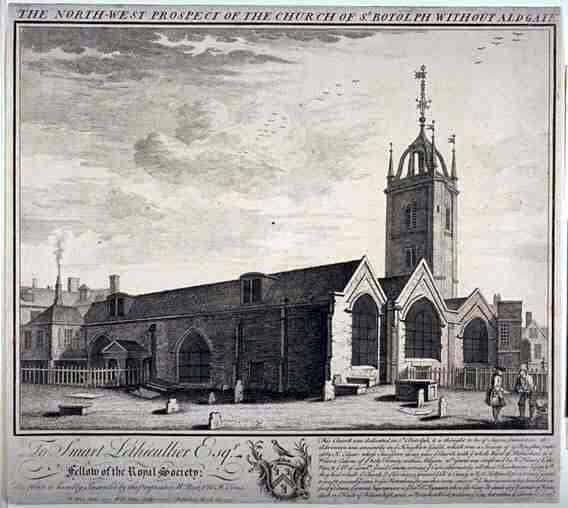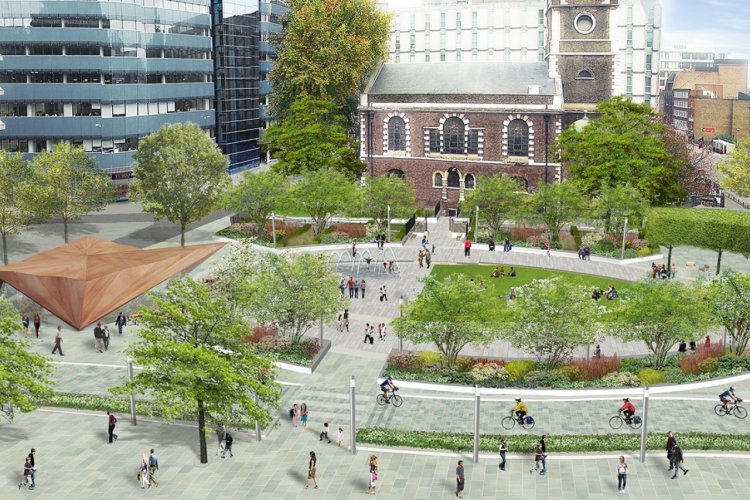Whilst doing some research on my new book I got distracted as is so easy to do when you’re into history. Whilst looking up a new garden in the old City of London I came across a dreadful tale with perhaps some family links.
In 19th-century London graves were allocated to their occupants only until space limitations required them to be reused again and in fact even today it is quite common for grave plots to be requisitioned after a generation or two of descendants have come and gone.

Back in Victorian times mortal remains were then exhumed and interred either in charnel houses in the crypt of the church. It was during one such situation that a particularly macabre event unfolded on the morning of 7 September 1838, as reported in The Morning Post and other contemporary newspapers.
Edward Cheeper, the Master of the local workhouse, was passing by St Botolph’s churchyard at 11am when he heard the piercing scream of a woman. Understandably alarmed he hurried over to investigate and found the a distraught woman staring down into a deep, 20-foot grave. The great depth of this new grave was because it was intended as a multi-occupancy burial site for paupers and was designed to accommodate up to 18 bodies. Peering down to the the bottom he could see the apparently lifeless body of Thomas Oakes, the parish gravedigger.
All this commotion rapidly drew a crowd of curious gawkers, and local fishmonger Edward Liddell was one of them. Despite the common consensus from the bystanders was that Oakes was definitely beyond help, Edward volunteered to climb down a ladder into the grave in an attempt to rescue poor Oakes.

Eyewitness reports claim that as Edward Liddell reached the floor of the grave and stooped down to put a rope around Oakes’ arms Edward’s body suddenly wrenched “as if hit by a cannonball” and the intrepid though unfortunate fishmonger keeled over and died immediately. In an act of considerable bravery, a third man then tried several times to climb down to retrieve the bodies of both Oakes and Liddell, but the air was so foul, putrid and revolting that he just couldn’t do it.
Ultimately, ropes on hooks had to be used to haul the unfortunate victims back up to the surface. At the subsequent inquest, it was decreed that both men had been fatally overcome by the noxious carbonic acid gas emitted from the thousands of decomposing corpses packed into the relatively tiny churchyard.
This rather morbid event was cited by Dr George Walker in a dossier of evidence he published in 1839 exposing the scandal of the disgusting, overcrowded and unsanitary state of the City’s burial grounds. Walker was a London GP and was extremely concerned at the health implications of the living and the dead being in such close proximity to each other.
Walker’s efforts eventually led to the passing of the Metropolitan Burial Act in 1852, which strictly prohibited any new burials in the churchyards of the City of London on the grounds that these were injurious to public health. See my blog post from last year Dancing On The Dead.
To alleviate the situation, massive cemeteries were opened beyond the then limits of the city, such as at West Brompton. Here, there was finally ample space to ensure that people could give their loved ones a dignified and permanent place where the dead could genuinely rest in peace.

Poor man!!
LikeLiked by 1 person
Yes, what a way to go 😦
LikeLike
Lovely church with aparrently the oldest organ in the uk which we heard played one lunchtime last week.
.
LikeLiked by 1 person
Yes, it is a truly beautiful church and unexpectedly so given its location. Did you enjoy the new Aldgate Square park next door? Probably much improved from the gyrator system that was there the last time you may have visited.
LikeLike